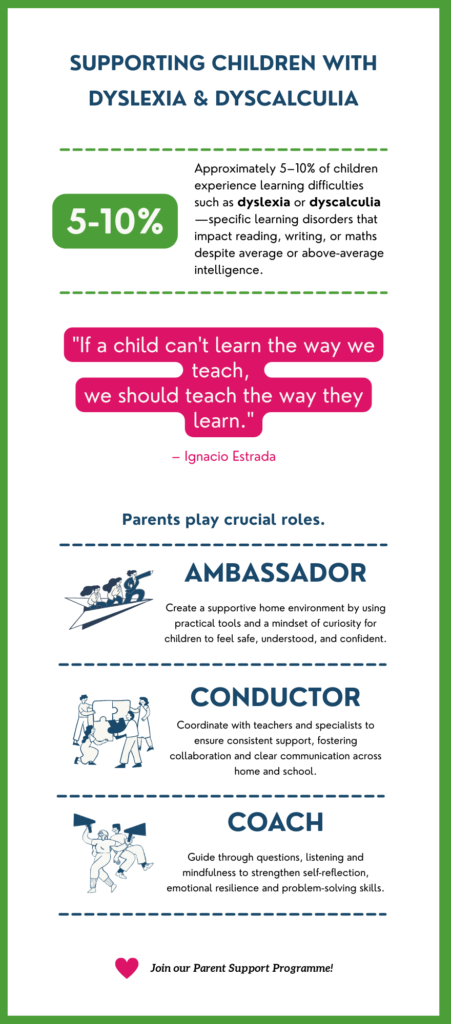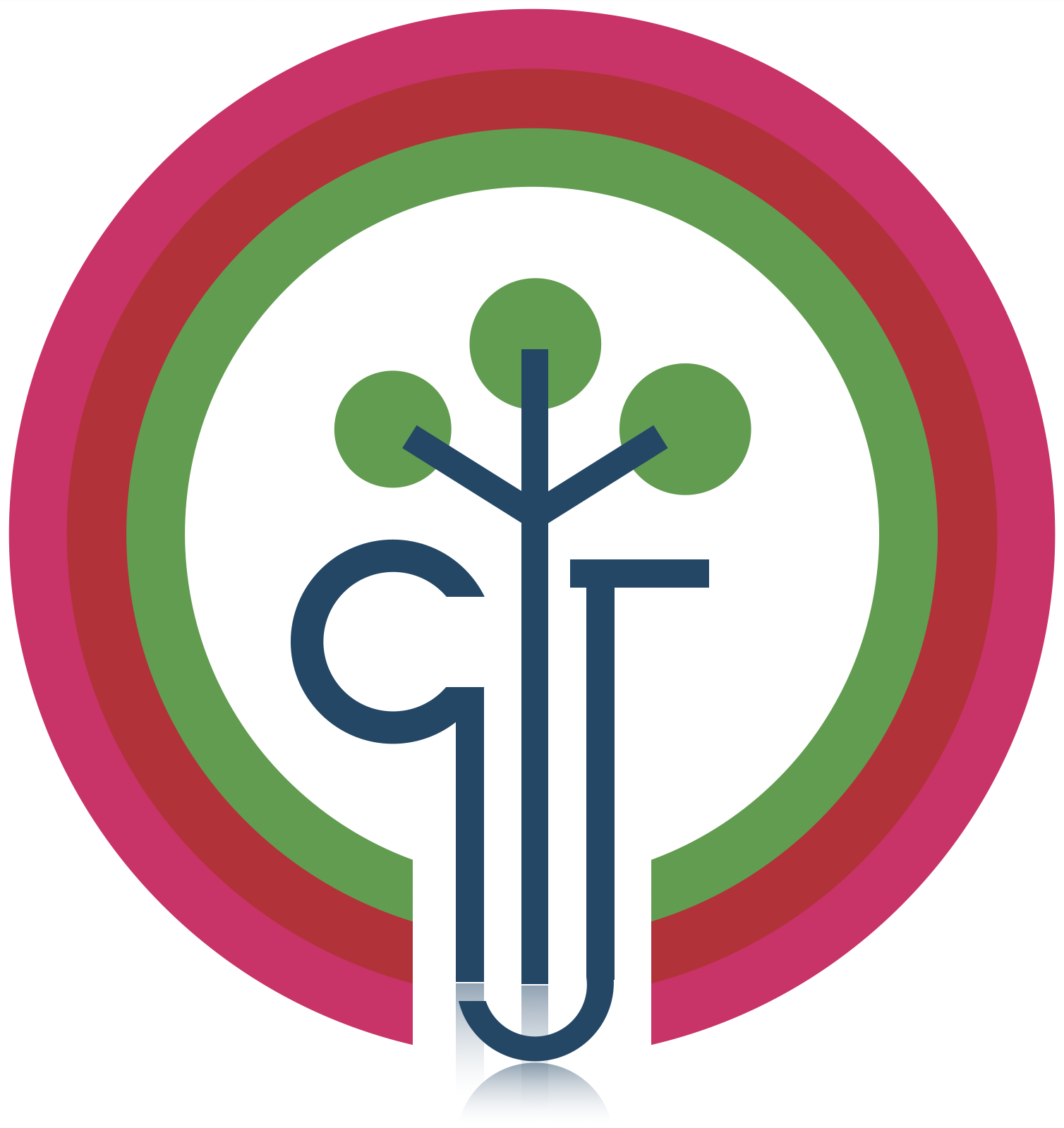
Every parent wants to see their child thrive in school and beyond. We dream of their curiosity blossoming, their confidence shining, and their joy in learning carrying them forward. Yet for some children, especially those with dyslexia or dyscalculia, the journey through reading, writing, or mathematics can feel overwhelming—less like an adventure and more like a daily struggle. These challenges are not a reflection of intelligence or effort; they are specific learning difficulties with neurological roots, often lifelong, and shaped by a child’s environment.
The good news is that with the right strategies, support, and encouragement, children can grow in confidence, skills, and resilience. Parents play a central role in this journey. But what does that role look like in daily life? From working with families and reflecting on my own parenting, I find it helpful to think of it in three ways—like being an ambassador, a conductor, and a coach.
Ambassador
As ambassadors, we create a home environment where our children feel understood and supported. Small details make a big difference. Multi-sensory learning—using blocks, beads, or Playdough—turns abstract ideas into something tangible. Simple trays reduce clutter, while reminders encourage self-organisation. For sensitive children, adjustments in noise, lighting, or seating help them feel secure and ready to learn.
But being an ambassador is not only about what we do, it is also about why and how. When we believe that children do well if they can, our approach shifts from judgement to curiosity. Instead of asking, “Why won’t my child try harder?” we begin to ask, “What skills is my child still developing, and how can I help?” In this way, we create conditions—both practical and emotional—where children feel safe to take risks and know their efforts are valued.
Conductor
As conductors, we bring the different people supporting our child into harmony. Teachers, specialists, and therapists may all offer useful strategies, but without alignment progress can feel fragmented. Parents often become the bridge—listening, coordinating, and ensuring everyone works from the same page. This consistency reassures children that home and school are moving in the same direction.
Mindset matters here too. When we approach collaboration not with blame but with partnership—asking, “How can we work together to help my child?”—we set the tone for constructive teamwork. A simple “Parent as Conductor Checklist” can help keep meetings focused on the child’s needs, guiding what to share, what to ask, and how to follow up.
Coach
As coaches, we step back to listen and observe before offering guidance. It is tempting to provide quick answers, but growth often comes from discovery. By asking guiding questions instead of rushing to solutions, we help children think problems through and find their own way forward.
This role builds more than academic skills. It strengthens resilience, patience, and problem-solving. Mindfulness supports this approach—pausing to breathe before responding, taking three slow breaths together before homework, or using a short reset game when frustration rises. In these mindful pauses, questions like “What do you think would happen if…?”or “What’s one step you could try next?” invite reflection. A child who figures something out for themselves gains confidence no test score can provide.
Key Takeaways

When we think of ourselves as ambassadors, conductors, and coaches, we see that supporting a child with learning difficulties is not about fixing them, but about walking alongside them with intention, compassion, and practical strategies. Each small step— whether shaping routines, fostering collaboration, or asking thoughtful questions—helps transform learning from a daily struggle into a shared journey.
This is the heart of our Parent Programme: Supporting Children with Dyslexia & Dyscalculia. Join us to explore these roles in depth and practise strategies that help children grow in confidence, skills, and resilience.
